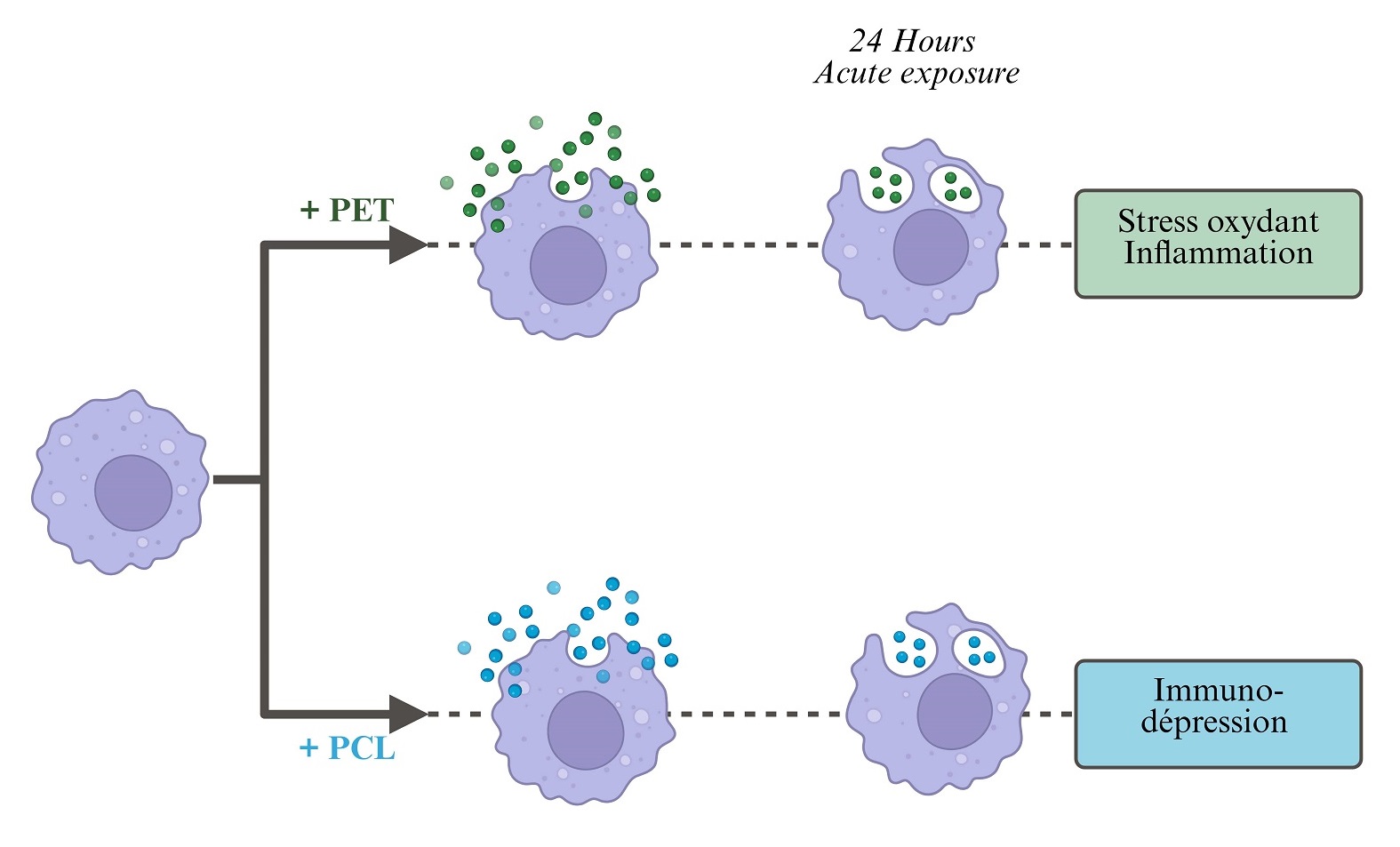The world has never used so much plastic, with an annual production of 500 million tons. Unfortunately, due to poor management of plastic waste at the global level, 10 million tons of plastics are released into the seas every year. This plastic waste, which takes decades or even centuries to fully degrade, first breaks down into microplastics (less than 1mm in size), then into nanoplastics (less than 1 micrometer in size). These micro- and nanoplastics are found everywhere on earth, from the abyss to mountain tops and polar ice caps. Living beings are constantly exposed to them, and humans are no exception.
To better understand the effects of these plastic particles on our cells, researchers at CEA-Irig/LCBM have studied the effects of plastic particles on the immune cells responsible in the body for removing particles (including biological particles such as bacteria and viruses), the macrophages. Macrophages also play a pivotal role in immunity, particularly via inflammatory reactions. What are the effects of plastics on these immune cells?
To answer this question, the researchers studied the effects of two different plastic particles on macrophages. On the one hand, they studied particles of poly (ethylene terephthalate) or PET, which is used in beverage bottles and is known to release particles into the liquids it contains. On the other hand, particles of polycaprolactone (PCL), a biodegradable plastic currently being studied as a replacement for conventional polyethylene-polypropylene-type plastics, which are poorly biodegradable, in applications such as packaging.
The researchers showed that these two particles induce very different effects in macrophages. PET particles induce cellular stress, in particular oxidative stress, and also induce a pro-inflammatory response in macrophages exposed to PET (see Figure). In addition, PET-exposed macrophages have a perturbed response to microorganisms, and would be less effective in their defensive role.
Macrophages exposed to PCL show no signs of cellular stress. Oppositely, they show a marked inhibition of their specialized functions, either phagocytosis (the ability to remove particles from the organism) or the establishment of an inflammatory reaction in the presence of a bacterial stimulus (see Figure). Therefore, they are overall, less effective in combating external aggression.
In conclusion, plastic particles are not without consequences for the functions of our immune cells. While these consequences differ from one plastic to another, plastic particles can alter the delicate balance of the immune system.

Figure: schematic diagram for studying the effects of nanoplastics on macrophages: macrophages (in violet) are exposed in culture to a non-lethal concentration of nanoplastics (green beads 200 nm in diameter) for 24 hours. At the end of this exposure, the cells were harvested and tested for various parameters.
Collaborations
- Chemistry and Biology of Metals, CNRS UMR5249, CEA, IRIG-LCBM, Univ. Grenoble Alpes, France
- Univ. Grenoble-Alpes, CEA, CNRS, Grenoble-INP, IRIG, SyMMES, CIBEST, Grenoble, France
- Institut de Biologie Structurale, Université Grenoble Alpes, CEA, CNRS, Grenoble, France
- Group of Mutagenesis, Department of Genetics and Microbiology, Faculty of Biosciences, Universitat Autonoma de Barcelona, Cerdanyola del Valles, Barcelona, Spain
•
- Facultad de Recursos Naturales Renovables, Universidad Arturo Prat, Iquique, Chile
- Laboratoire de Spectrométrie de Masse BioOrganique (LSMBO), IPHC UMR 7178, CNRS, Université de Strasbourg, 67087 Strasbourg, France
- Infrastructure Nationale de Protéomique ProFI – UAR 2048, 67087 Strasbourg, France
Fundings
This work was carried out within the framework of the European project PlasticHeal (Horizon 2020#965196). They are also supported by the ANR (projet Plastox, ANR-21-CE34-0028-04).